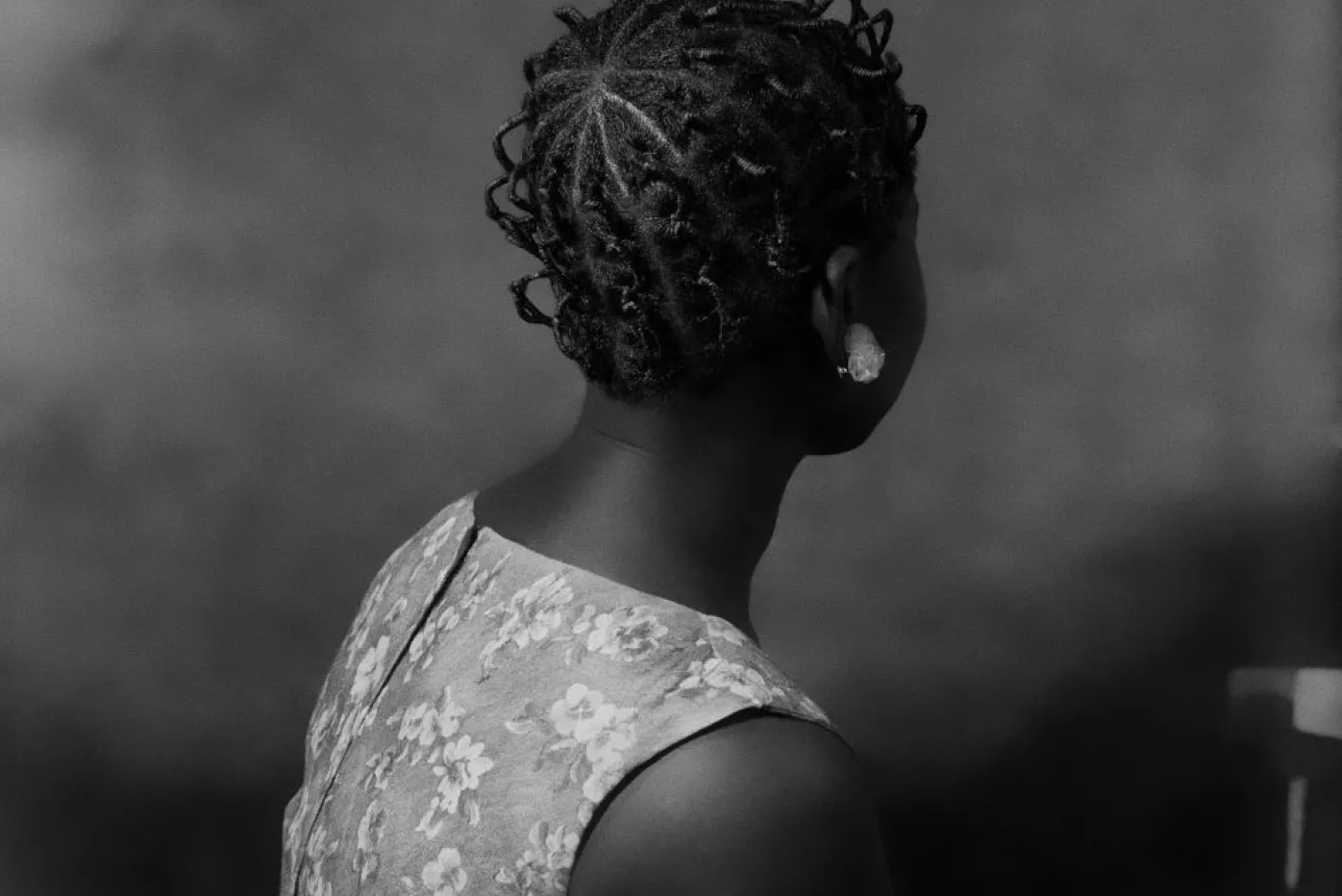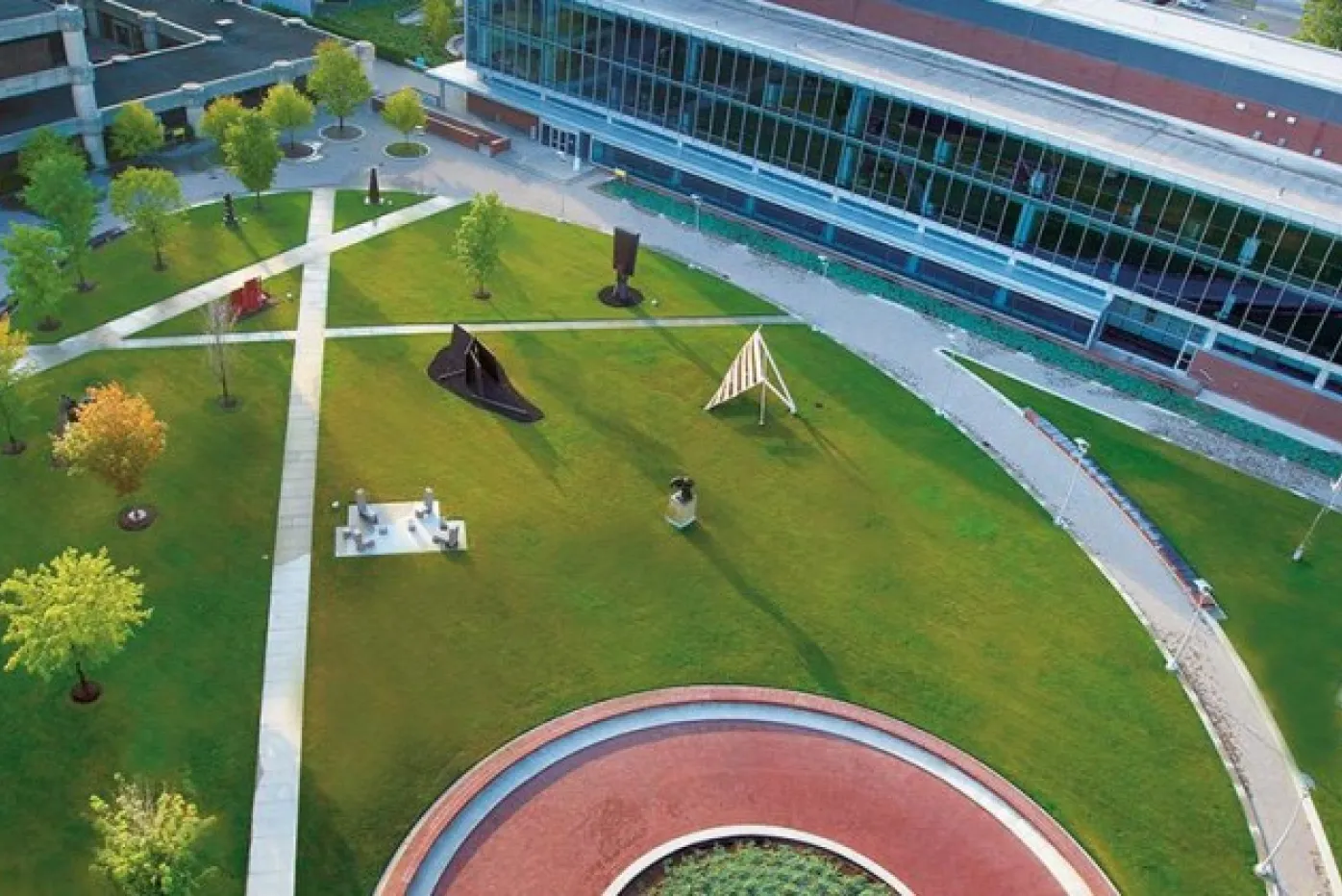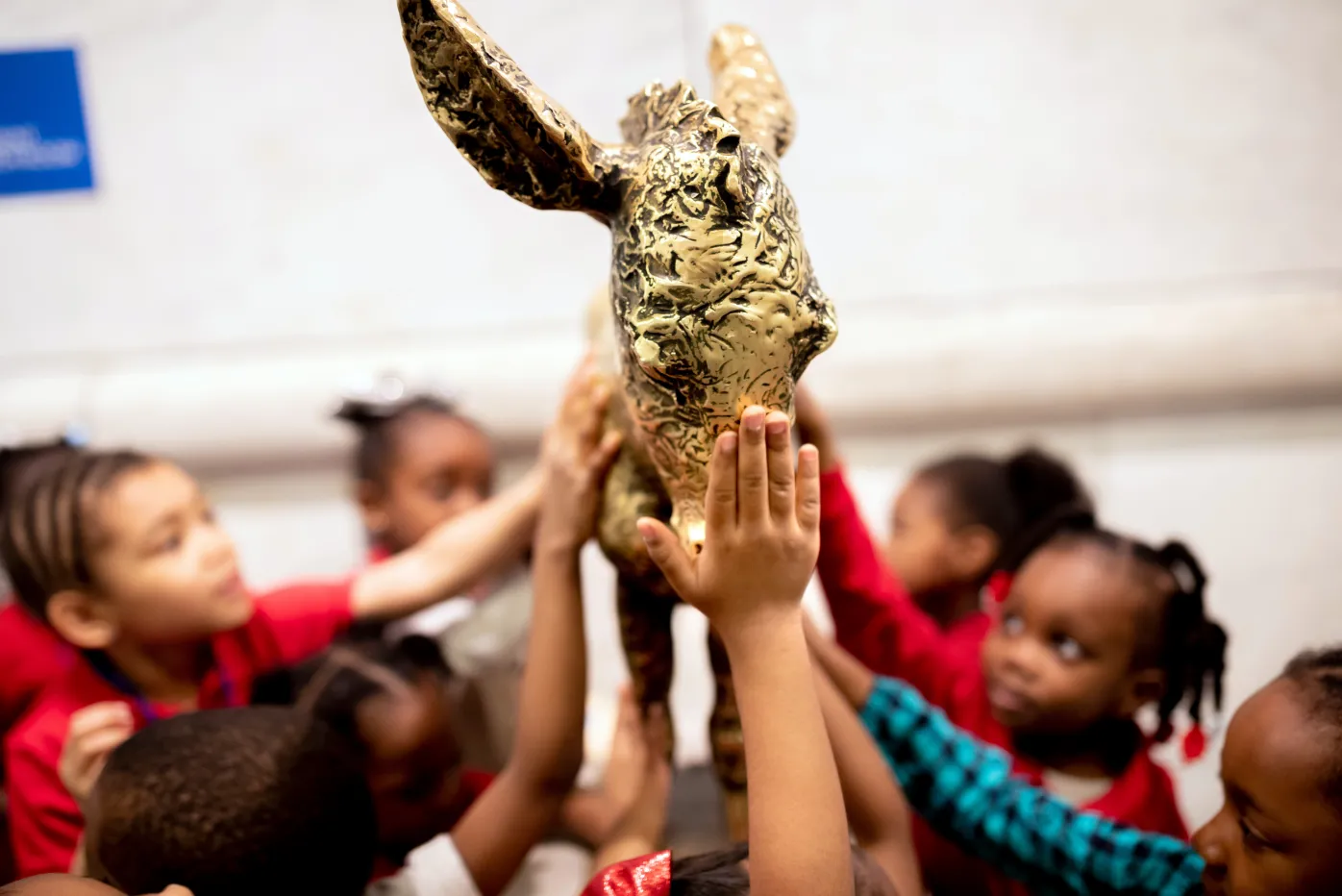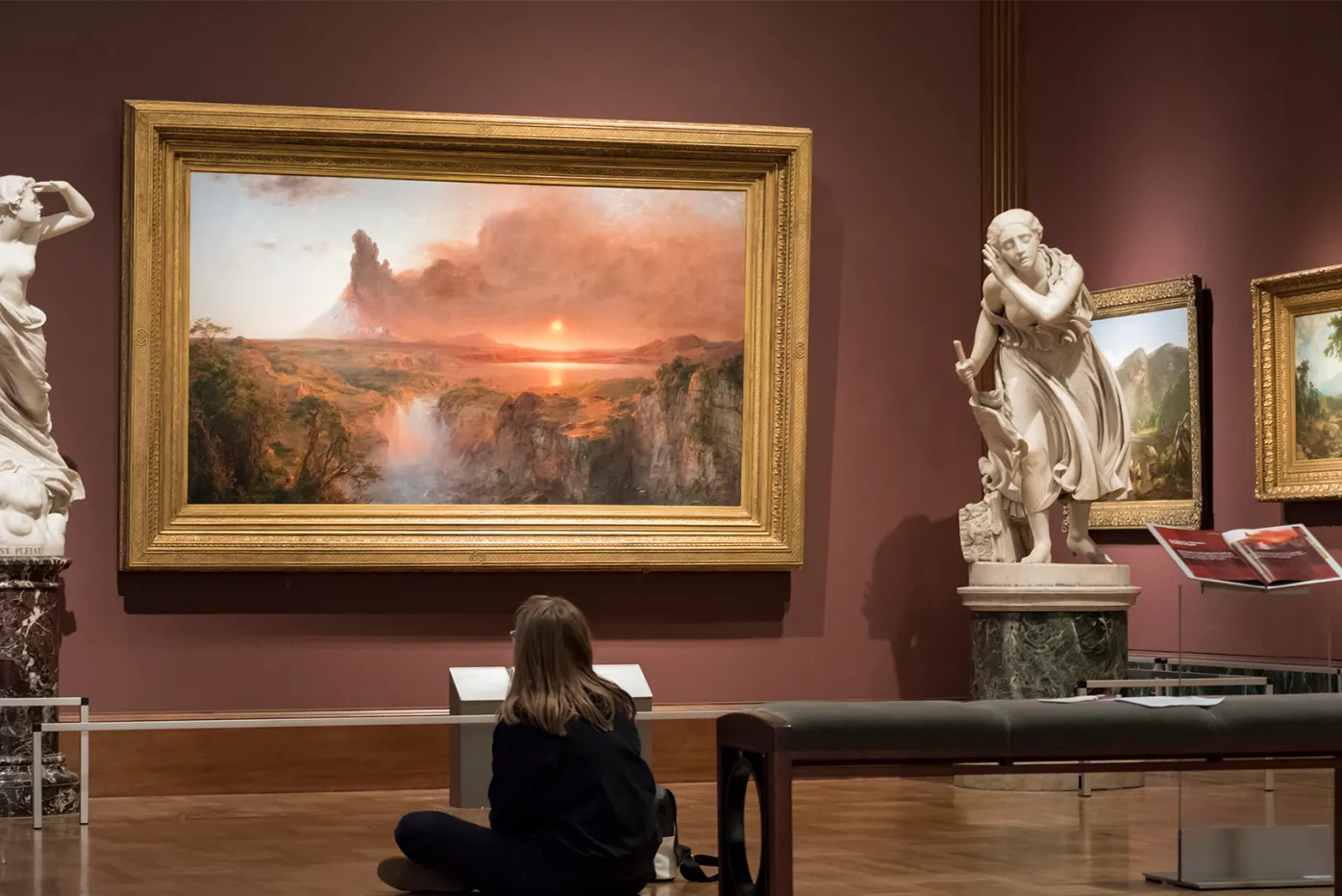Guest writer: Ayana Bryant-Weekes
Fashion is not something that exists in dresses only. Fashion is in the sky, in the street, fashion has to do with ideas, the way we live, what is happening. —Coco Chanel
I had never heard of James Barnor before I was invited to the DIA’s media preview of James Barnor: Accra/London—A Retrospectiv, his first major exhibition in North America. As I and the board members of the Detroit Fashion Community—a nonprofit organization dedicated to cultivating and supporting fashion professionals and enthusiasts in the metro Detroit area—walked through the galleries, we were transported by Barnor’s work and the vivid scenes he captured.
DIA curator Nancy Barr gave us a tour, and as we walked through the galleries, I soaked in Barnor’s perspective on the beauty, history, and vibrancy of his life in Ghana and abroad. I came to a halt at a massive image of the back of a young girl’s head. The neatly parted columns of hair that left just enough scalp exposed to feel a cool breeze, and her tightly twisted tendrils that spun into each other at the nape of her neck, instantly brought to mind my tactile memories of a fresh hairstyle.
Barnor’s photography highlights the decorated familiarity- the elaborate elements of something shared by an entire community- that enrobed daily life for African and diasporic communities. An image of a young girl’s traditional Ghanaian hairstyle brought up memories of my own African American and Caribbean childhood experiences of getting my hair plaited. Especially growing up in Detroit, the Black hair and fashion capital of the Midwest, where your hair is considered a make-or-break outfit accessory. The beauty of the final product is in part connected to an intricate process that is not pictured, but still culturally understood and appreciated in that community.
Barnor’s eye for style is apparent even in his everyday images of people going about their lives. He captures men in uniform, well-dressed partygoers, concert attendees at sporting events and rallies, festive birthday parties, and women in elaborate head wraps and skirts at market days, creating detailed observations of Ghanaian style and clothing. That same eye allowed him to document London in the Swinging Sixties, where he worked extensively for Drum and Flamingo magazines depicting the African diasporic communities developing there, with images that ranged from churchgoers wearing Kente cloth (a colorful Ghanaian fabric) to the colorful and creative lives of Black people in London. The color photography techniques he learned in London are apparent in his photos of models of African descent, including Constance Mulondo, Rosemarie Thompson, Erlin Ibreck, Rema Nelson, and Marie Hallowi, all of whom appeared on Drum covers in the late 1960s.
While Barnor may not be widely recognized in the style world, his work has been an inspiration to some. Tyler Mitchel, the fashion photographer from Atlanta who photographed Beyonce for the cover of Vogue magazine in 2018 (becoming the first Black photographer to shoot a Vogue cover), cites Barnor as an influence. Barnor brings to his photos all the elements of great style photography: an eye for beautiful people, individual personalities, composition, color, texture, context and more. In one short visit I discovered a new fashion photography icon.



